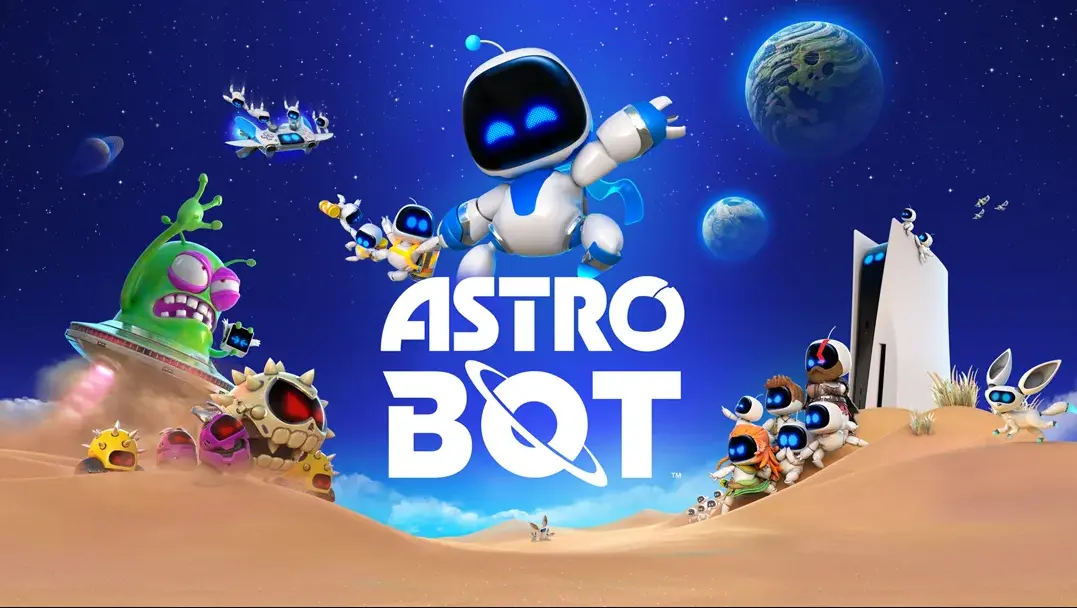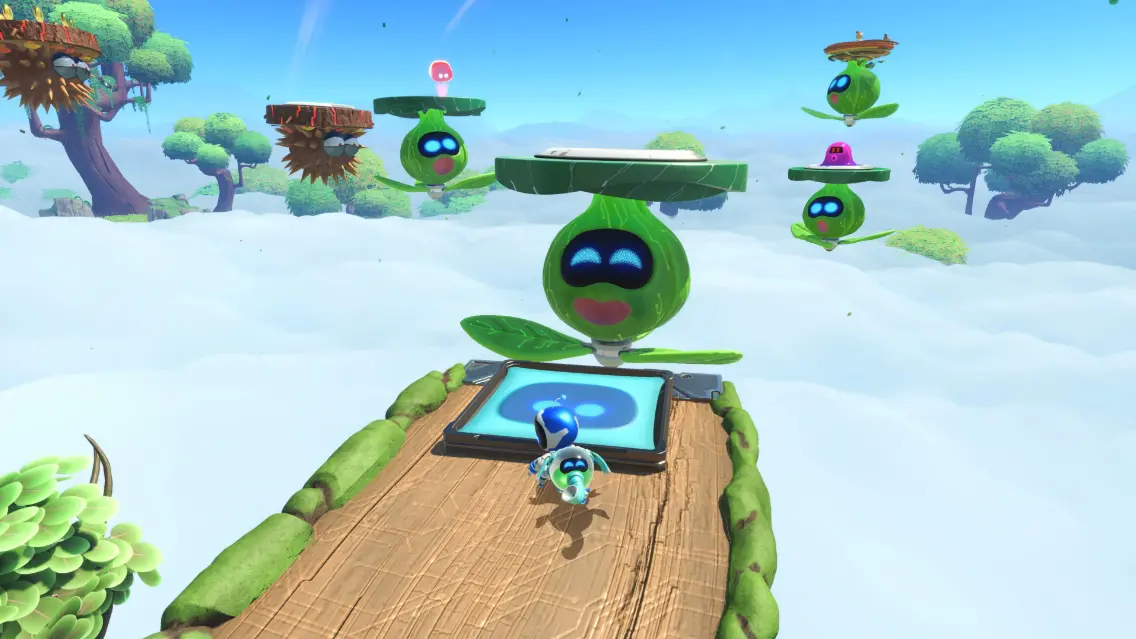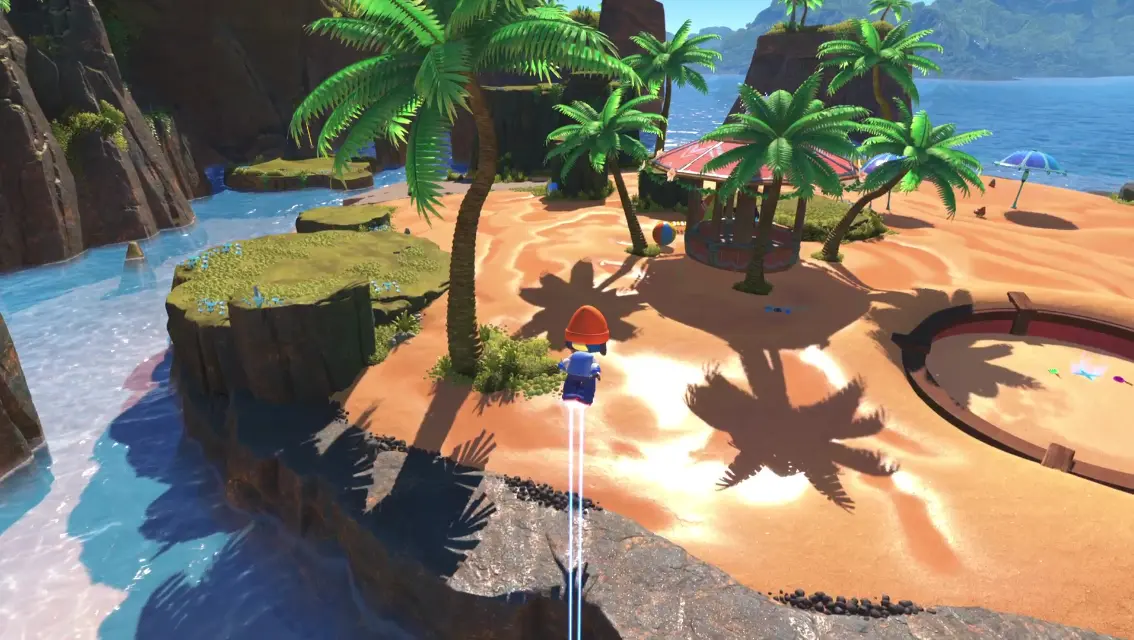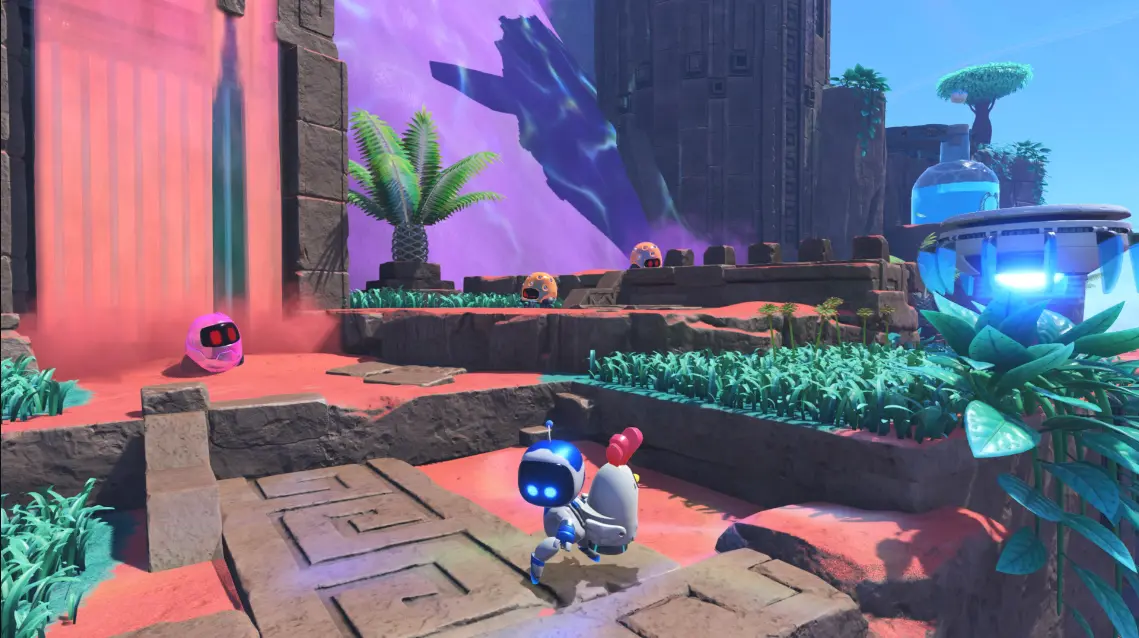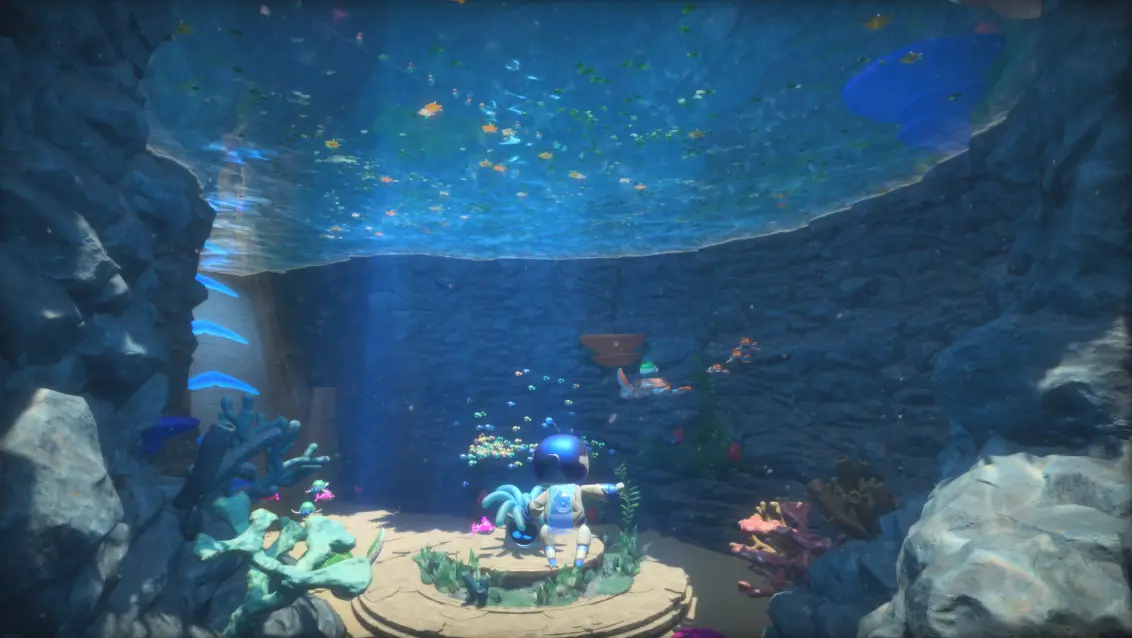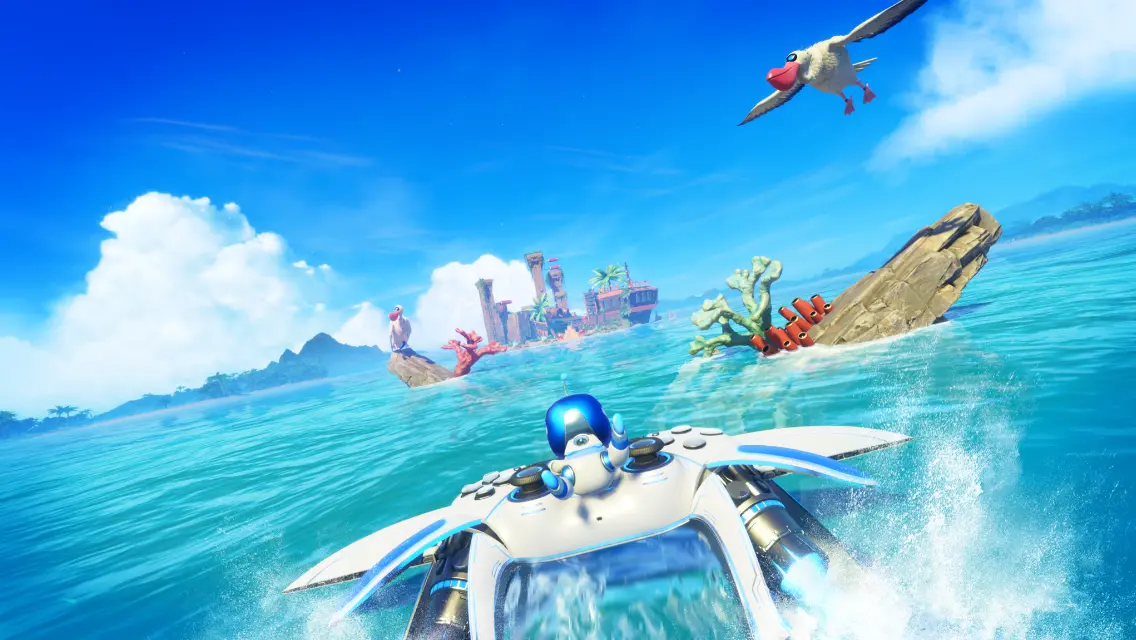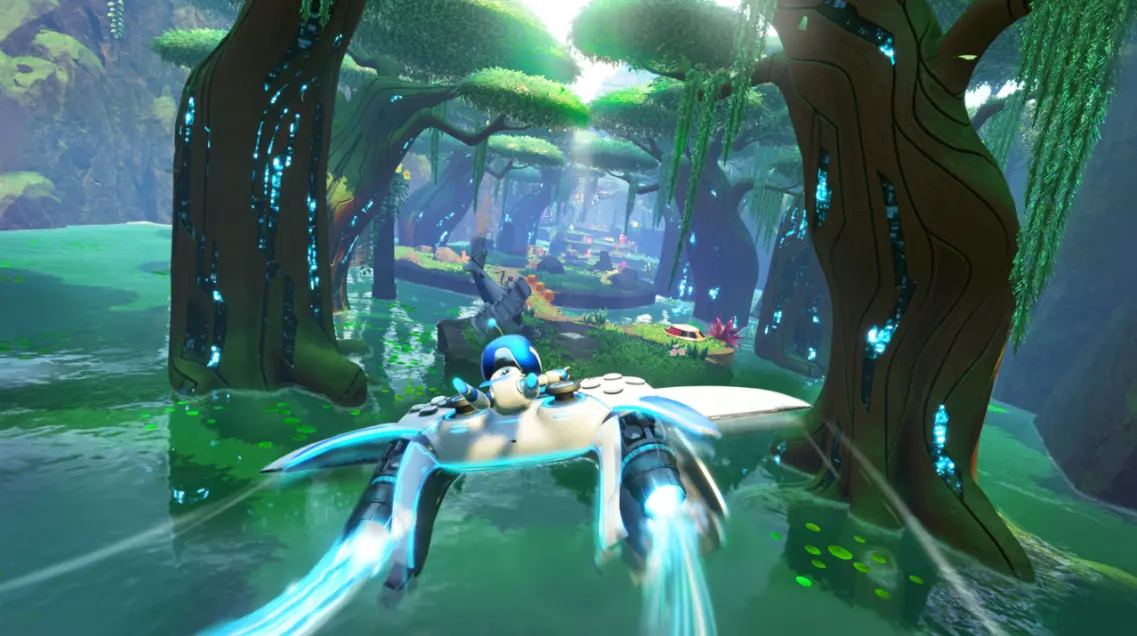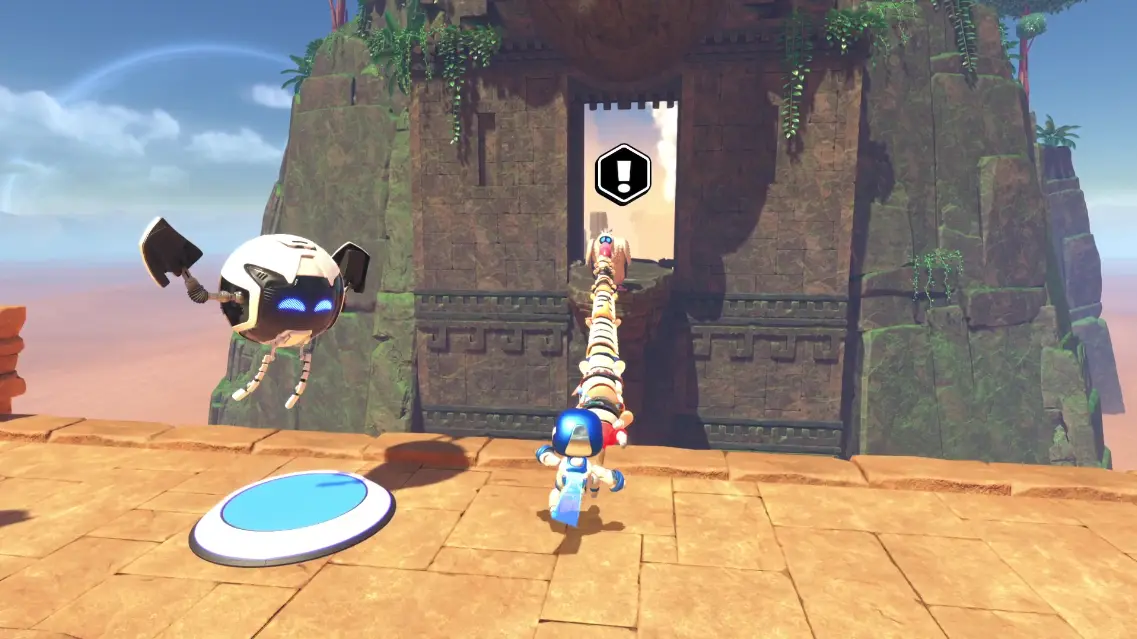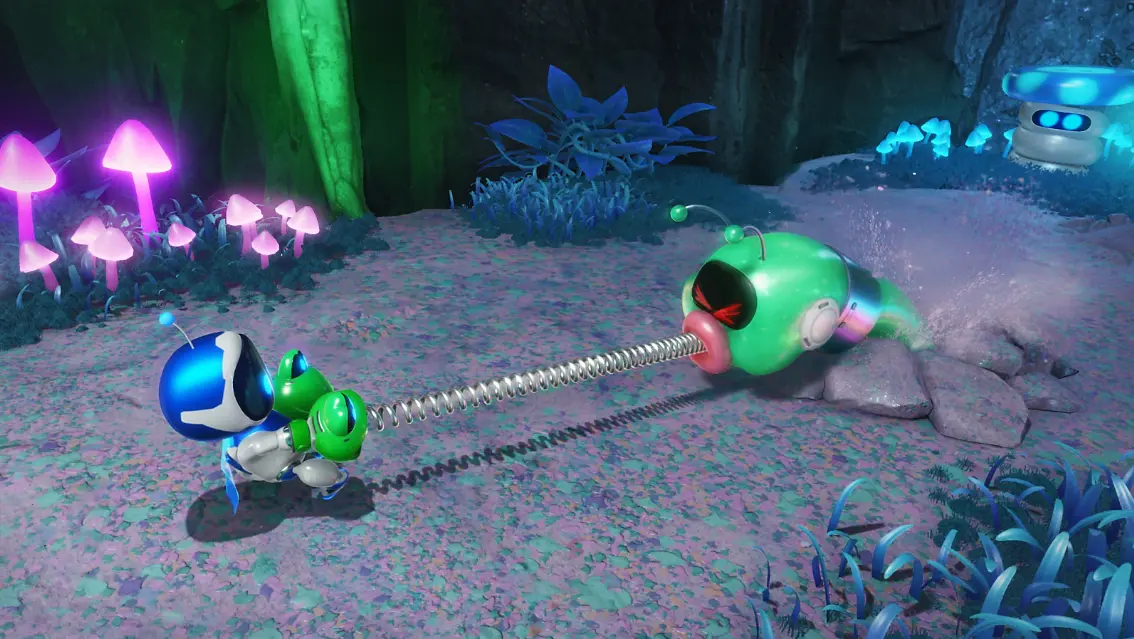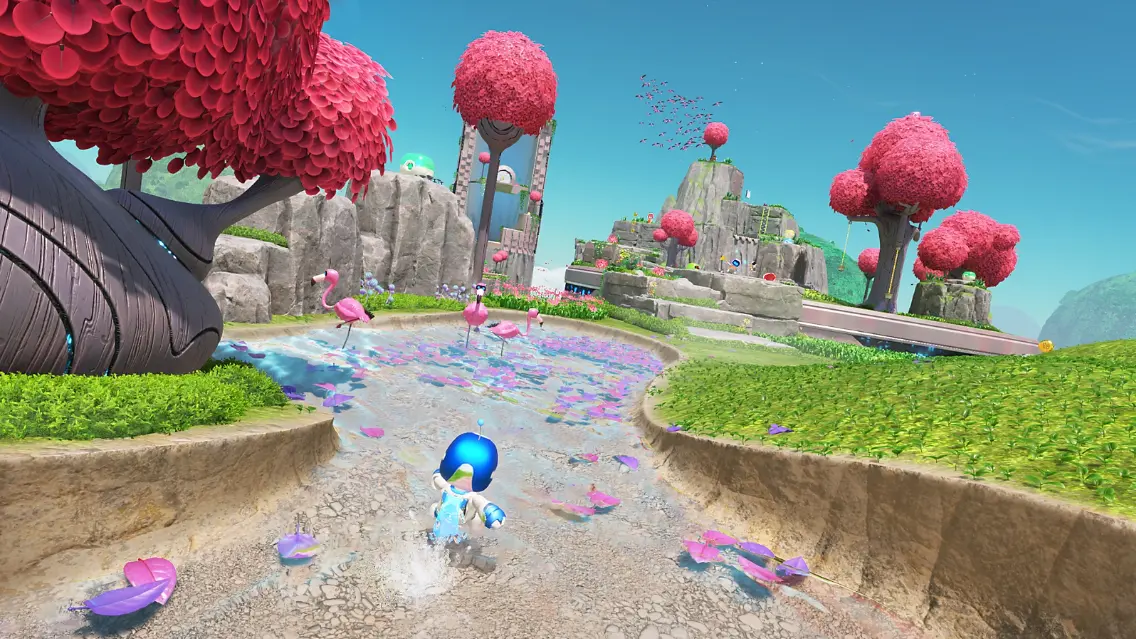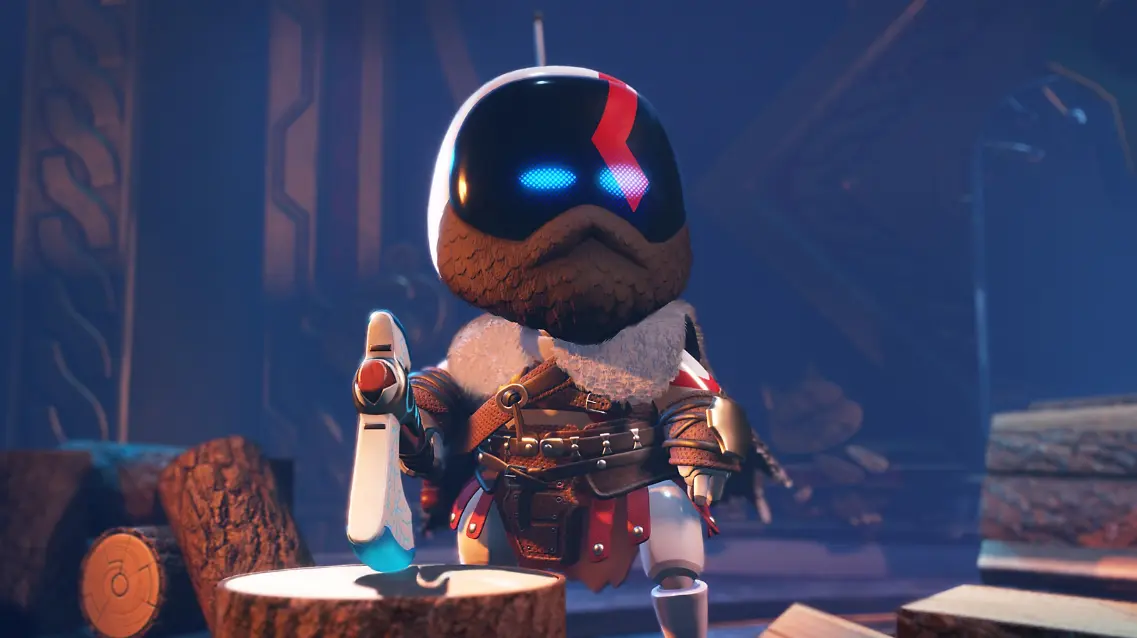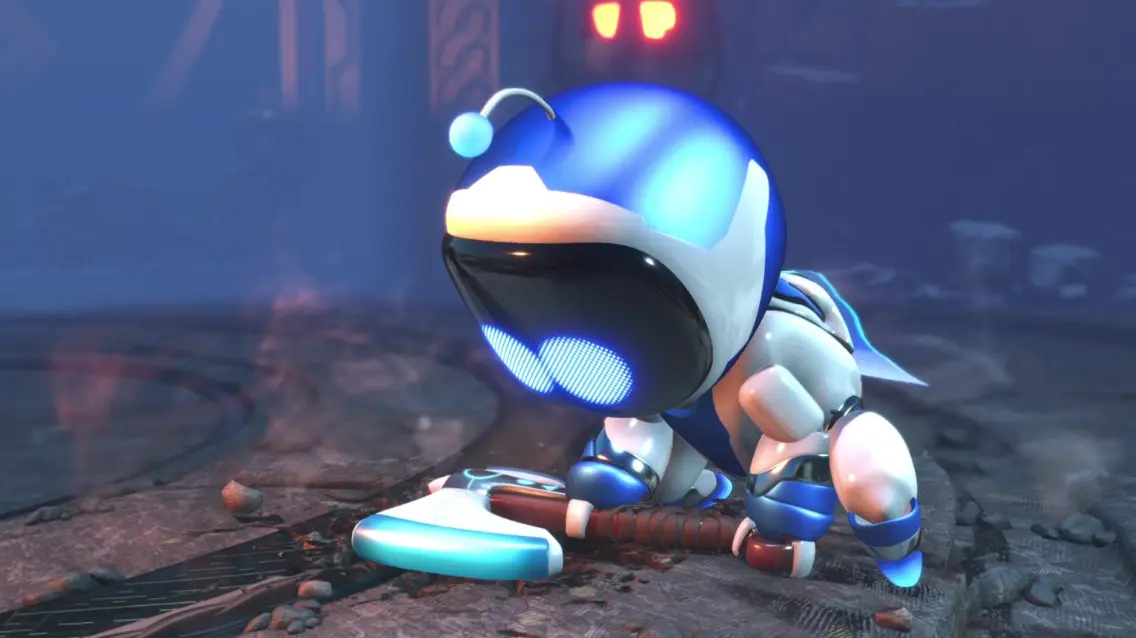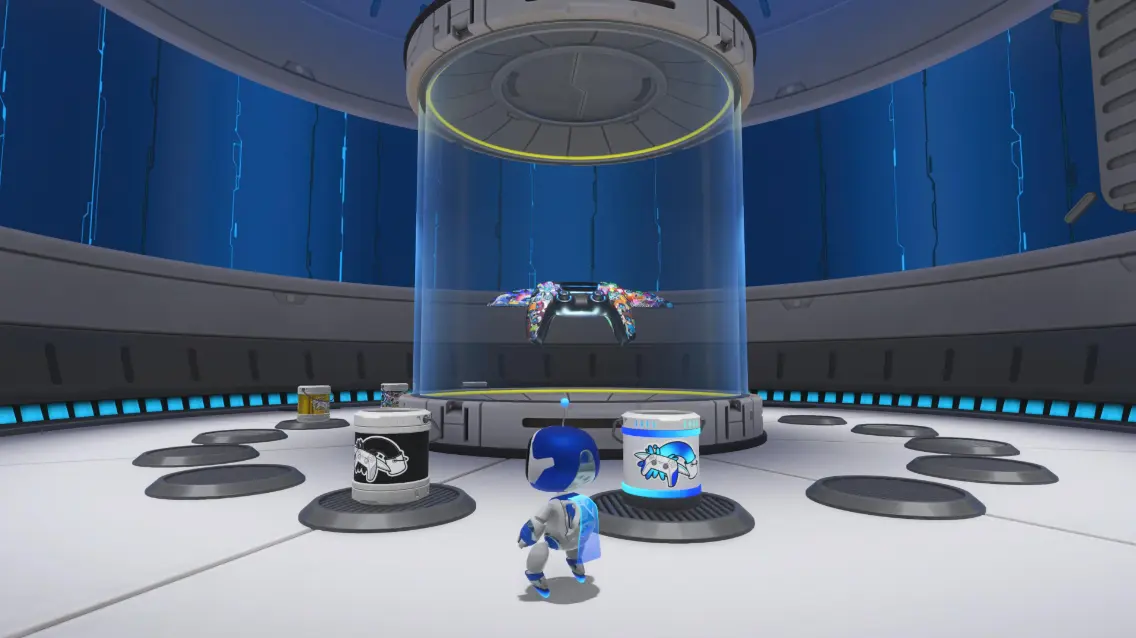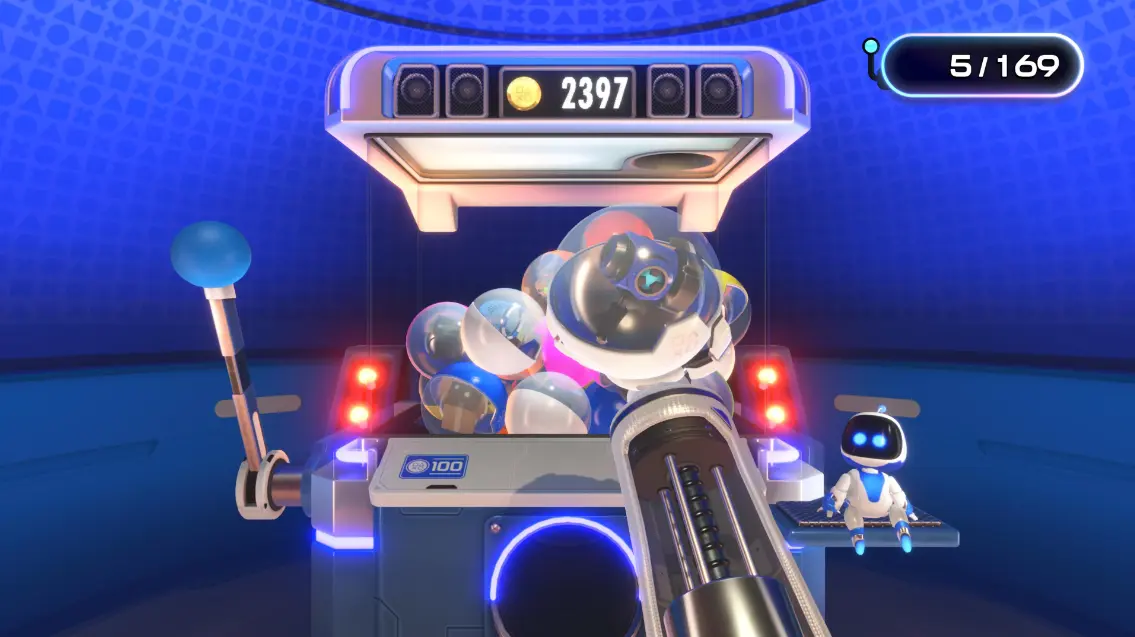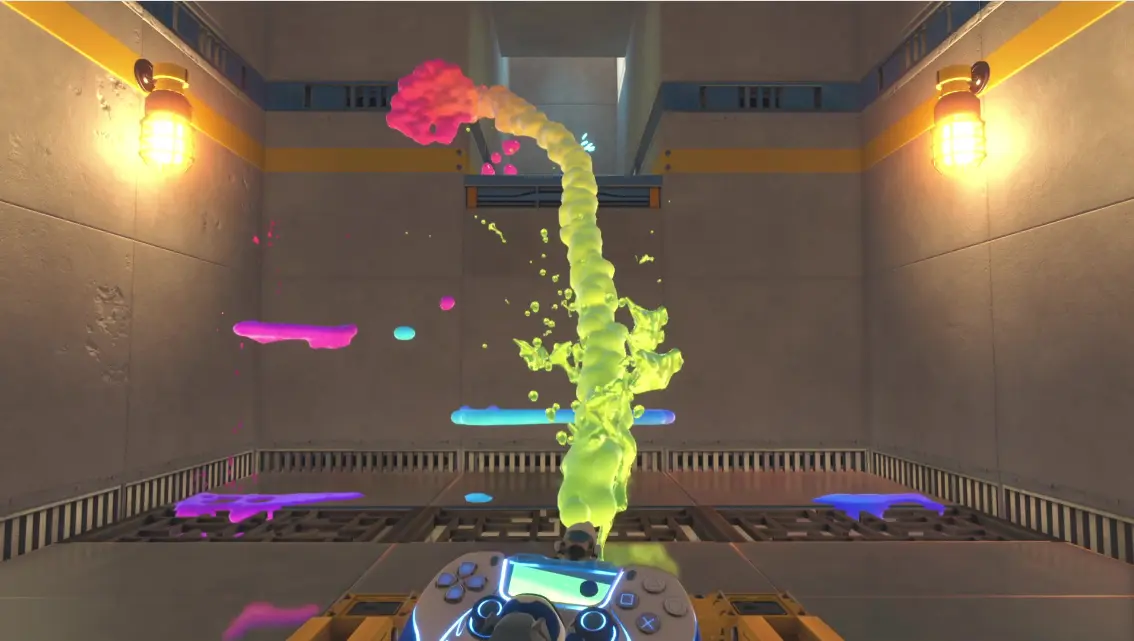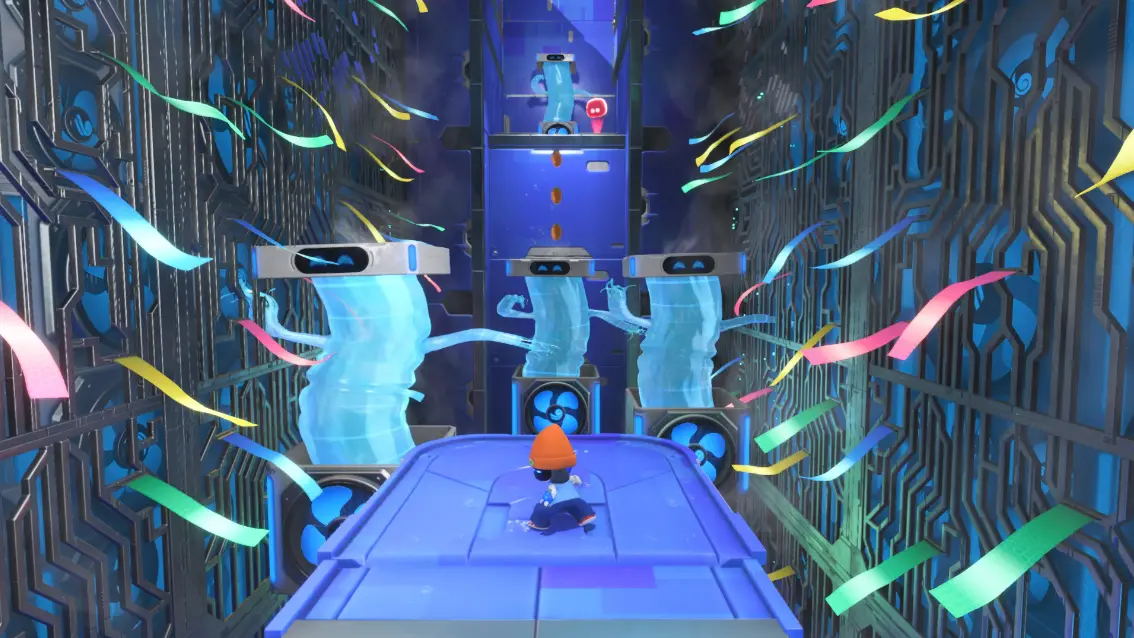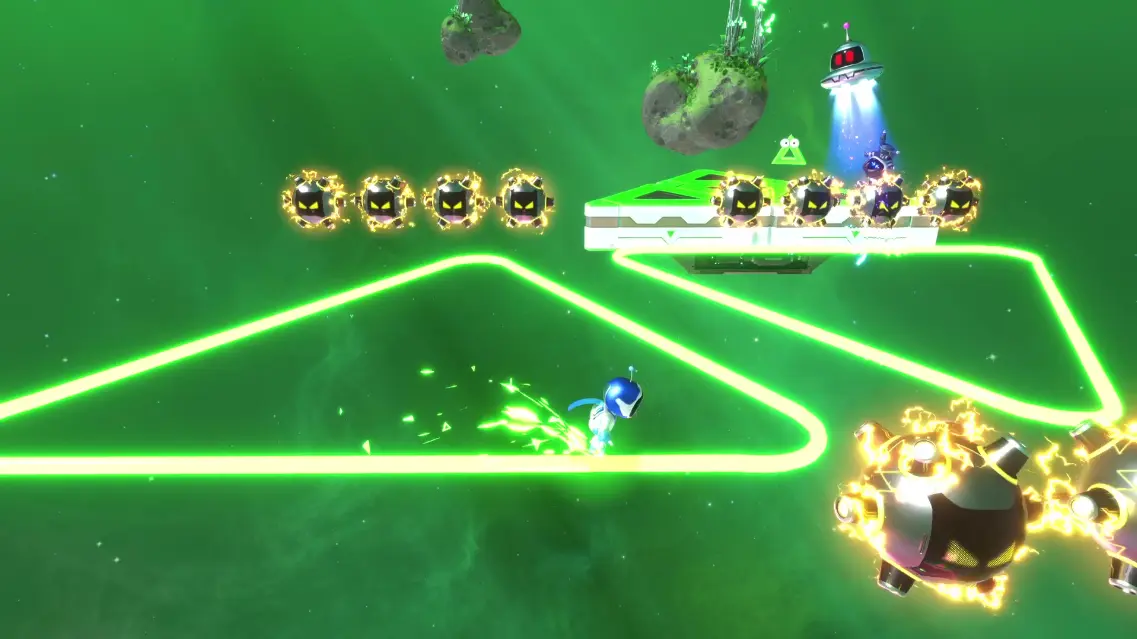Release Date : September 6, 2024
Developer(s) : Team Asobi
Publisher(s) : Sony Interactive Entertainment
Platforms : PS5
Throughout 2024, PlayStation Studios’ products for Sony’s console have been doing well, more or less as expected. The few titles from this label have seen fates as opposite as they are unexpected. Helldivers 2 was a big hit, while Concord, the latest release on which a great deal of effort was invested, will simply get canceled after a short lifespan. Fortunately, a brave little robot completes this strange triangle, and hopes to make PlayStation’s end of year shine.
With Astro Bot, Team Asobi intends to take the DNA and structure of Astro’s Playroom demo and turn it into a real adventure on its own. In the starting blocks ahead of its September 6 release on PS5, is this 3D platformer solid enough to join the elite club of the greatest games of the year?
Table of Contents
The Lost Bots
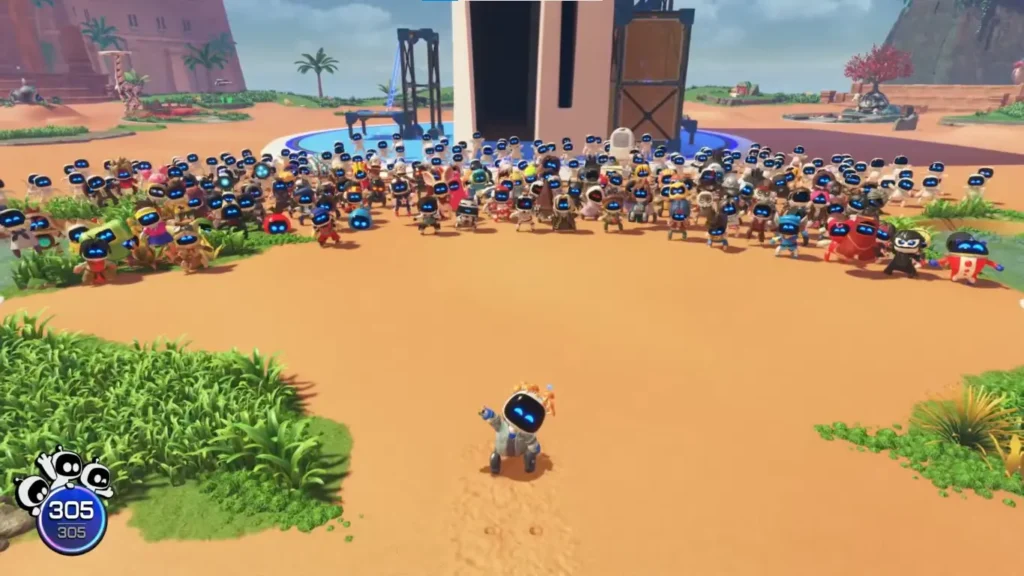
On a trip into space, along with his entire robot family, Astro encounters a malicious alien. Eager to get his hands on the heart of the PS5 mothership, the evil creature snatches it away and uses it to boost his flying saucer. Now deprived of its main source of energy, the PS5 breaks up and all the bots scatter across the galaxy. The machine crashes on a desert planet, stripped of all its components.
As for the little Astro, it’s taken care of by the Dual Speeder, based on the DualSense design. Thanks to it, he can now travel through space in search of the PS5 parts and his lost friends. There are five planets to explore, each containing several levels with different lengths, totaling around seventy in all. It’s up to you to make your way through these levels, saving enough bots to take on the boss of the galaxy and win one of the PS5 components.
As soon as you start exploring, you realize something that will never change: the game is vibrant and full of life. With colorful backgrounds, great level design ideas, and a multitude of things happening on screen, a sense of wonder is felt at every turn. The ground is sometimes littered with gizmos, such as petals, confetti, fruit, or even screws, which react to our footsteps or blows. Interactions are also possible with the many elements forming the scenery, ranging from snow that you drop from a tree, to grass or flowers that bend when you pass over them. Another amusing detail is that each species of fauna is replaced by its bot version.
Meanwhile, the level design is perfectly calibrated to ensure that you never get bored. You propel yourself through the air thanks to springboards, slide down slides, spin to trigger switches, swing from ropes or vines, and much more. Apart from a few issues with depth-of-field positioning, causing a few unfortunate falls, it’s all very smooth and intuitive.
This means that the door is wide open to a smooth passage through the levels, and also to a desire to go as fast as possible. In short, the level design and a strong sense of detail fully support the impression of taking part in a giant recreation, which is further enhanced by the music, light and chill, or more energetic.
Addictive Gameplay…
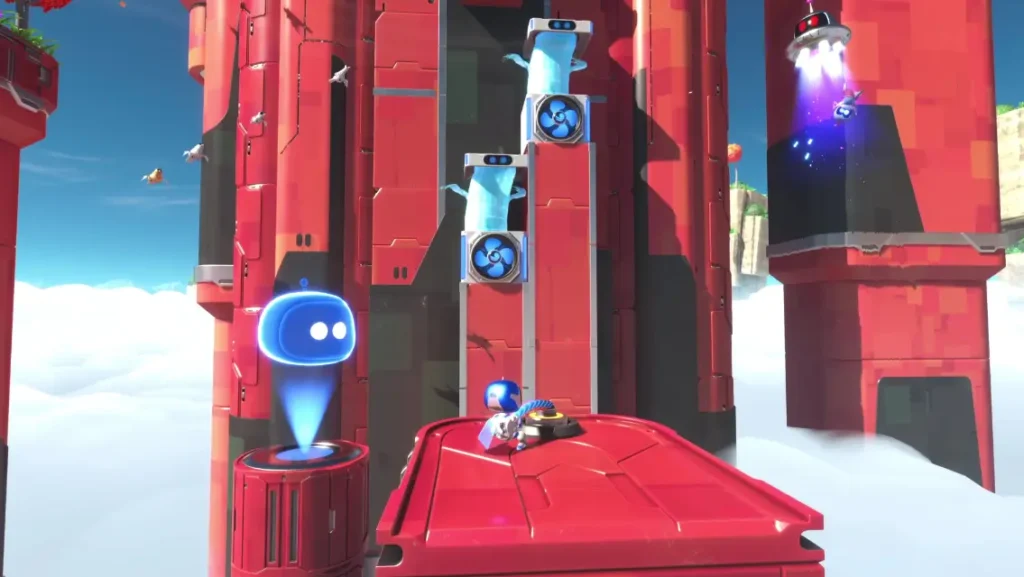
To get through these charming levels, you can rely on the solid gameplay foundations of a 3D platformer, and more specifically those of Astro’s Playroom. The little robot can still hit, jump, and glide thanks to his laser boots, which can also inflict damage on enemies below. What’s new here is that he can swim and dive in the aquatic zones provided for this purpose.
More importantly, Astro is equipped with over a dozen backpacks and other gadgets that give him new abilities for the duration of a level. You’re probably already familiar with the Astro-mouse, which allows you to shrink to fit into very small spaces, or the Barkster, the robot dog that can propel you in a desired direction to dash, break resistant obstacles, or beat sumo robots. The latter are among the new enemies designed for the occasion, making up a bestiary of nearly 70 members. More variety, which is good for you, and brings a fresh approach to combat, far from being a source of stress.
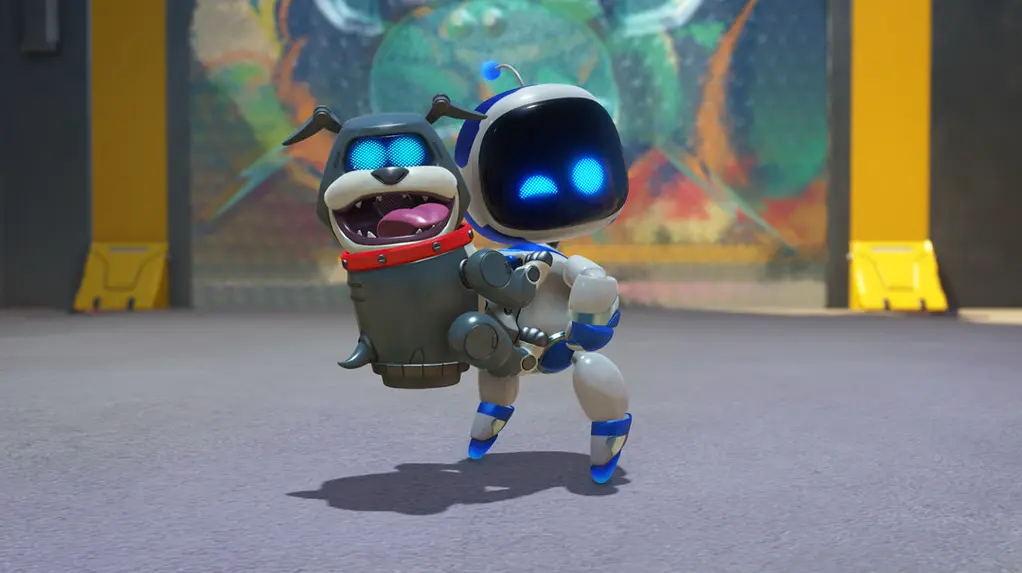
One of our favorite power-ups is the Muteki armor. It transforms Astro into an indestructible ball capable of rolling on spikes, resisting all types of projectiles, and being propelled by mini-volcanoes. There’s also the stopwatch, offering the ability to slow down time significantly, which is cleverly used to explore levels and eliminate enemies. A fun little detail: Astro wears a PSVR headset that activates when time is altered.
And one last example: Astro’s sponge. Our friend can fill himself with water, making him giant and super-powerful. But that’s not all, as he can also throw accumulated water onto fire or other suitable elements. We’ll leave it to you to discover the other powers, but they’re all worth the effort and add something extra to the game, regularly boosting the already dynamic, responsive, and fluid level design and gameplay.
These gadgets also come in handy against the big villains we fight at the end of galaxies, playing a vital role in their destruction. The patterns are simple enough on paper, but you need to understand them before you can hope to inflict damage. The result is fun, epic confrontations, again enhanced by a fitting soundtrack. And these aren’t the only bosses you’ll encounter, as other, more mini-boss-like threats surprise you at the end of certain levels. Astro Bot is bursting with energy, but rest assured, we’ve only scratched the surface.
… Powered by Top-Notch Dualsense
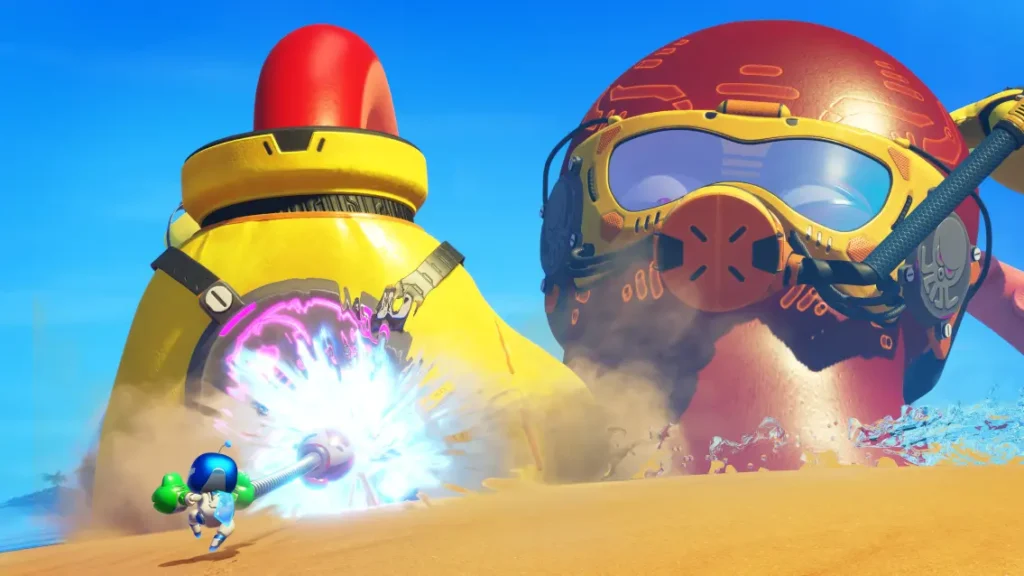
Everything we’ve just described can be felt with a DualSense in hand. And yes, already the star of Astro’s Playroom, it’s once again at the heart of the experience. Quite simply, this is the only game that makes full use of the PS5 controller’s potential. Whether we’re splashing around in water or on metal, plastic, sand, dirt, or even mud, the haptic feedback acts accordingly. In the levels where rain falls, raindrops still have an impressive effect. When you pull the little cords to make objects appear, you feel the sensation of the spring stretching. As you can imagine, the list of examples alone could fill several paragraphs.
Moreover, the development team has directly integrated puzzles that are solved according to haptic feedback. Faced with a wall made up of several luminous tiles, you need to push the right one to continue. Simply touch them with Astro and concentrate on the vibrations. When the vibrations are particularly strong, it’s the right tile. This is a regular feature, although it’s a shame that the concept doesn’t extend to other types of puzzles. In any case, if you’re having trouble identifying the square, or your controller is simply not working (and this is no DualSense legend), a visual aid can be activated in the options.
The PS5 controller’s other functionalities are also present, as the microphone is also used to operate various switches with our breath, not to mention the adaptive triggers, which are equally impressive. Shooting in bursts or opening zippers causes the R2 key to tremble continuously, and the resistance of the triggers varies depending on the action performed, as when drawing a bow or using the various gadgets mentioned above.
The only problem is that some passages use the controller’s gyroscopic functions and, unfortunately, the approximate nature of this feature can give us a bit of trouble. But don’t panic, Team Asobi has taken care of the problem, as you can switch these motion gaming movements to the left stick.
A Love Letter to PlayStation
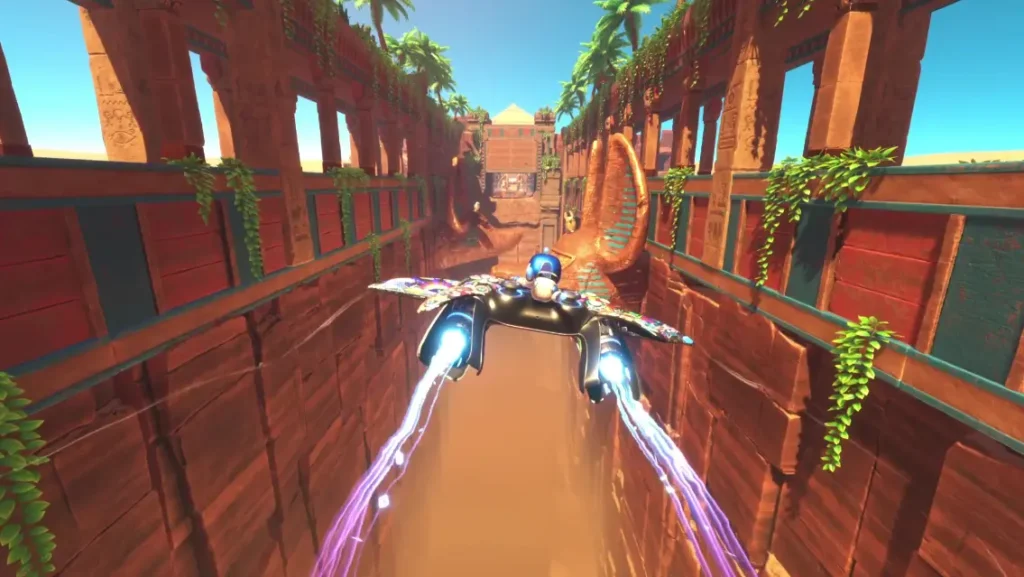
A universe full of charm, a gameplay that’s just right… Astro Bot is at the top of the 3D platformer league. Although it doesn’t really reinvent the wheel, and the franchise has already given us some very good moments, we’re amazed by such care and generosity. What also intrigued us most was the PlayStation presentation. The undeniable main attraction of Astro’s Playroom, we wondered how the development team would handle the fan service aspect in this “sequel”.
Well, here too, don’t look any further: once again, we’re faced with a huge love statement to the history of the PlayStation. At the start of the game alone, the various available save slots are represented by memory cards from the first console. The message to PlayStation fans is clear from the start: expect a dose of deep nostalgia. Another element that goes directly in this direction is that half of the 300 bots to be rescued are PlayStation games. We won’t go into all the titles here, simply to keep you surprised and to save space, as there are so many cameos.
Just know that Astro Bot really does cover thirty years of video games, including a part that is finally considered third-party today. The classics are covered, but a few more obscure franchises are also highlighted. A few of the references mentioned in Astro’s Playroom are not included. Another pleasant detail to note is that the origin of the bots is often related to the levels they appear in. Characters linked to demons or zombies, for example, will be in slightly spooky levels, while those from a certain game set in a nuclear base in Alaska will be hidden in a snowy level…
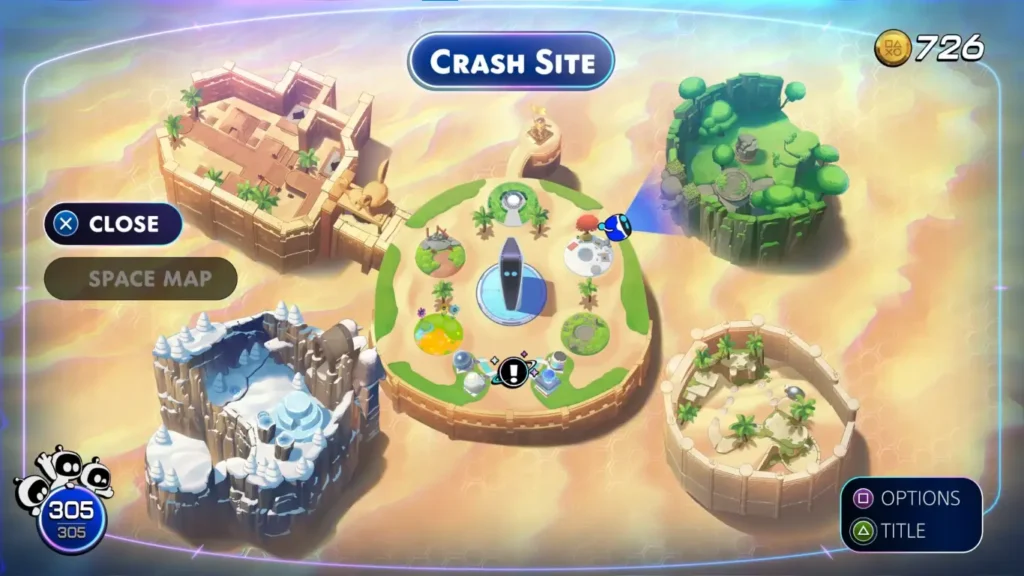
Collecting bots sends them to the game’s hub, called the “Crash Site”. They all settle in the main square, where the PlayStation ship is located. They will gradually populate the site, which will then become the scene of countless winks. Watching them, or interacting with them by hitting them (poor things), we witness their more or less characteristic animations and funny reactions. And to see as much as possible, it’s often necessary to visit the Gatcha lab, back in this adventure. Here, we no longer unlock PlayStation accessories or consoles. Instead, for 100 coins each, you can pick up skins and, more importantly, small artifacts belonging to each hero. These artifacts allow you to “complete” their scenery. It’s hard to explain, but you’ll understand soon enough.
The most curious among you will spend some time discovering how each character reacts to your interactions. Also, a Pocketstation bot is stationed near the mothership to let you browse the encyclopedia of special bots. It’s an opportunity to play “Who’s Who?” and test your knowledge of the various videogame licenses, while enjoying the excellent work of our translators. Keen to provide us with puns and clever phrases, the team skilfully describes the personality or defining features of the character in question in just a few words, so that we can recognize him or her.
Delightful Fan Service, Without Getting in the Way

The bots aren’t here just for show, each time a new vessel lands in the hub, you’ll have to join it to unlock a new constellation and continue the adventure. To get there, you need to gather a certain number of bots to form a wall, bridge or rope, creating a passage. All you have to do is call them with the Triangle key, and wait until they’re complete before you can carry out the required action.
What’s more, the hub also hides secrets that can only be accessed if you have a sufficient number of bots. This is where you’ll find that they’re also capable of lifting or pushing extremely heavy things. However, on several occasions, we regret that the bots aren’t quicker to appear. Nothing serious here, it’s just that everything runs so smoothly that such situations become obvious.
But THE big treat in Astro Bot is the presence of “hero levels”. After defeating a boss in a galaxy, you’re taken to a final stage in which you meet one of PlayStation’s stars. For the duration of a level, the codes of the universe to which the star belongs are adopted, such as the environments or the musical theme, and Astro also benefits from the hero’s abilities, adding variety to the gameplay even more.
Officially, God of War has been announced as one of those levels where you can use Kratos’ Leviathan axe. We’ll leave you to discover the others, the surprise is so delightful, but it’s fair to say that these are tribute and nostalgia sequences pushed to the max, as well as being inspired. Pure joy for PlayStation fans.
It’s at the end of these levels that we finally recover one of the components of the PS5 mothership. Back at base with the part in your pocket, you take part in a little DIY mini-game where you reinsert the component into the console yourself. A very silly but amusing sequence, in which DualSense is once again put to good use with a drill, a saw or a hammer. In other words, Astro Bot plays the Disneyland version of PlayStation.
This brings us to an important point: it’s clear that the degree of enthusiasm for all the references and winks depends on your affinity with PlayStation. You won’t have the same appreciation for delivering special bots or playing those “hero levels” depending on your history with Sony’s licenses and consoles. Fan service is an essential component of Astro Bot, but for better, never for worse. So it’s perfectly possible to get your kicks without any particular baggage, but this feeling weighs heavily on the balance ( and the score).
Hidden Gems
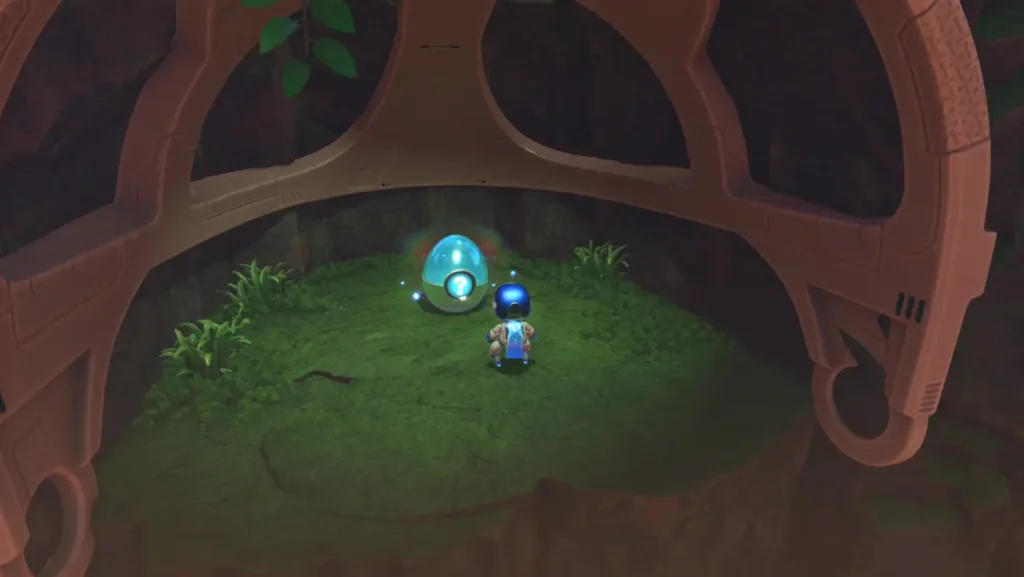
Small references to PlayStation codes can also be found throughout space. Within each galaxy, you can move freely between levels, which also have inspired names. This is an opportunity to come across meteorites or spaceships which, when hit, reveal bonus levels. These often involve a platforming or combat challenge. We’re even allowed to take part in small stages with beautifully pixelated retro backgrounds.
But what we really wanted to highlight were the levels in the colors of the controller’s four iconic keys: Cross, Circle, Square and Triangle. Each key offers four small skill challenges, full of obstacles, at the end of which you save a special bot. In a game lacking a little in challenge for the more seasoned players, we have to admit that all these bonus stages are very welcome, and add new characters to our collection.
We haven’t really addressed how the bots are hidden in the levels and, at the risk of being repetitive, Team Asobi has been rather inspired. Generally speaking, and without the need to search every corner, most of the bots can be found without too much trouble. And with good reason, since it’s essential to have delivered enough bots to progress in the game. Having said that, some of them are well hidden and require you to be more vigilant in exploiting the scenery, or to make the most of the power you possess at any given moment.
The same goes for puzzle pieces. Some are more stealthy, and can even be picked up during the short introductory phases of the levels aboard the Dual Speeder. These fragments, composing the frescoes of Astro’s Playroom lab, are used here to unlock functionalities in the Crash Site. The gatcha lab, previously mentioned, is unlocked in this way, but it’s not the only one. The garage and wardrobe, designed to modify the Speeder and Astro skins, must also be reconstructed using puzzle pieces. After that, there are even better hidden secrets. Even Photo mode is only available using this process. It’s a shame, though, as it’s only available a little late in the game.
Bonus zones are also present in the levels, and can be accessed under various conditions, such as beating X number of enemies or activating X number of scenery elements. Inside, you’ll find a special bot to rescue. There are also secret exits to be found in certain levels. Particularly well-concealed, these warp zones take you to a bonus galaxy, where you can play additional levels, also containing their share of bots and puzzle pieces. When they’re gone, they’re still there.
Overall, curiosity is often rewarded. We keep wondering “what would happen if we climbed that tree?” or “what would happen if we reached the top of that statue?”, and the coins keep appearing as we approach. There are lots of little nooks and crannies like this, so we’re constantly trying to reach this or that part of the scenery – as far as possible, of course.
If completion is important to you, and you don’t particularly want to go round and round in circles for long periods trying to find the secret(s) you’re missing, there’s a little bot bird at the start of each level, once you’ve completed it at least once. For 200 coins, it will accompany you to hunt down bots, puzzle pieces and even the famous secret exits. On the road to 100%, no one is left by the side of the road. Finally, trophy hunters will have plenty to do, from specific actions linked to particular heroes, to the ultimate surprise that awaits you once all the bots and puzzle pieces have been found…
Expect a full dozen hours if you’re comfortable and intend to do it all, or even fifteen if you take your time. This may seem a little short, and greedy as we are, we wouldn’t say no to a few more hours of gameplay. However, Astro Bot remains within the standards of the genre, and given the glitter in your eyes all the way through, without the slightest hint of apparent boredom, the game’s lifespan remains quite decent. And let’s not forget that a DLC adding levels and speedrun challenges will add a few extra goodies eventually.
Conclusion
Astro Bot fulfills all its objectives and more. It could have been limited to the status of an enjoyable living tribute to PlayStation history, which it still does perfectly here, delighting all PlayStation fans. But by taking all the ideas introduced in the Astro’s Playroom demo to their logical conclusion, this first major adventure for Team Asobi’s robot leaves us on the edge of our seats. Thanks to its stunning visuals and rich DualSense sensations, this entertaining fireworks display is a true feast for the senses, with a smooth and varied gameplay to satisfy everyone. Generous in terms of collectibles and secrets to find, the game proves to be highly addictive, grabbing you by the hand right from the intro and not letting go until the end credits. So, there’s no doubt that Astro Bot is one of the best games of the year, and this beloved robot may even be THE star of PlayStation 5.
